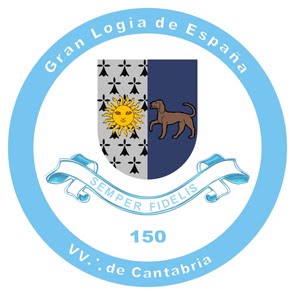The Tortuous History of Spanish Freemasonry Comes Under the Spotlight at Almeira Conference
The conference was co-organised with Almeria University and the provincial governments of Andalucia and Aragon, and over three days delegates were treated to more than 100 presentations delivered by academics from Spain, Portugal, Belgium, France, Italy, Argentina, Mexico, Costa Rica and Cuba.
CEHME was founded in 1983 by Professor José Ferrer
Benimeli at Zaragoza University. Since then it has overseen many academic gatherings, fostered many postgraduate and Ph.D students, and published numerous studies on Freemasonry.
However, its work has not always been easy, as Freemasonry in Spain has had an extremely controversial past.
Dr. Diego Hinojal Aguado of the National University of Distance Education in Calatayud, revealed how King Ferdinand VII (1813-1833) was an early opponent of this ‘liberal’ association. On 13 January 1824, Ferdinand passed a royal decree outlawing ‘secret associations’, including the Freemasons, who met in ‘clandestine meetings’.
As a result, Spanish Freemasonry was forced underground and became increasingly political. In response Ferdinand issued another decree on 9 October 1825 which labelled the Freemasons as ‘enemies of the throne and the altar’.
Dr. Luis Martin of the University of Pau spoke about how Spanish freemasonry was again persecuted by the dictatorship of General Primo de Rivera (1923-30), and how the Spanish Craft, once again, became increasingly politicised. He explained how the two main masonic obediences, the Grand Orient of Spain (GOE) and the Grand Lodge of Spain (GLE), opposed de Rivera’s dictatorship, a stance that resulted in 200 Spanish masons being imprisoned for plotting against the State.
Several speakers delivered presentations on the suppression of Freemasonry both during and after the Spanish Civil War (1936-39). In July 1936, the fascist General, Francisco Franco, led large sections of the Spanish army in revolt against the elected government of the Second Republic and as his forces advanced, many leftists, trade unionists and Freemasons were executed.
Not surprisingly, Spanish Freemasonry openly declared itself ‘against fascism’ and as Victor Manuel Arbeloa, a historian from Pamplona explained, prompted one leading mason to publish a propaganda booklet in Brussels in which he appealed to all masonic powers to come to the aid of Republic.
Although his clarion call fell on deaf ears, the French masonic historian, André Combes, explained how Spanish masons did receive international fraternal assistance during the fighting when representatives of the two main Spanish Grand Lodges (GOE and GLE), met with L’Association Maçonnique Internationale (MAI) in Switzerland.
MAI subsequently provided assistance for approximately 2,000 Spanish refugees with masonic family ties and they also sheltered several hundred exiled masons in southern France, many of whom went on to join new lodges.
However, probably the most memorable paper was delivered by Professor Sanchez Ferre of the University of Barcelona, who spoke about how the Grand Orient of Spain created several new lodges named after Spanish masonic Presidents while in exile in Mexico.
In addition, in January 1945 they also created a lodge in Barcelona named in honour of the martyred Catalan masonic President, Luis Companys who, after Franco’s victory, had fled to France but was later arrested by the Gestapo and sent back to Spain, where he was shot.
Remarkably, this Barcelona lodge included a number of members of the underground Catalan nationalist party, Esquerra Republicana Catalunya. However, in 1946, the lodge’s existence was discovered by the police and most of its members were arrested.
They were all subsequently tried by the Special Tribunal for the Suppression of Freemasonry and Communism which had been established in 1940, and on 10 July 1948 four were sentenced to 20 years imprisonment, while 12 others received sentences ranging from 6 to 9 years. The Master, meanwhile, managed to escape.
It should be noted that UGLE did not recognise the GOE, GLE or MAI during the period mentioned.





No hay comentarios:
Publicar un comentario